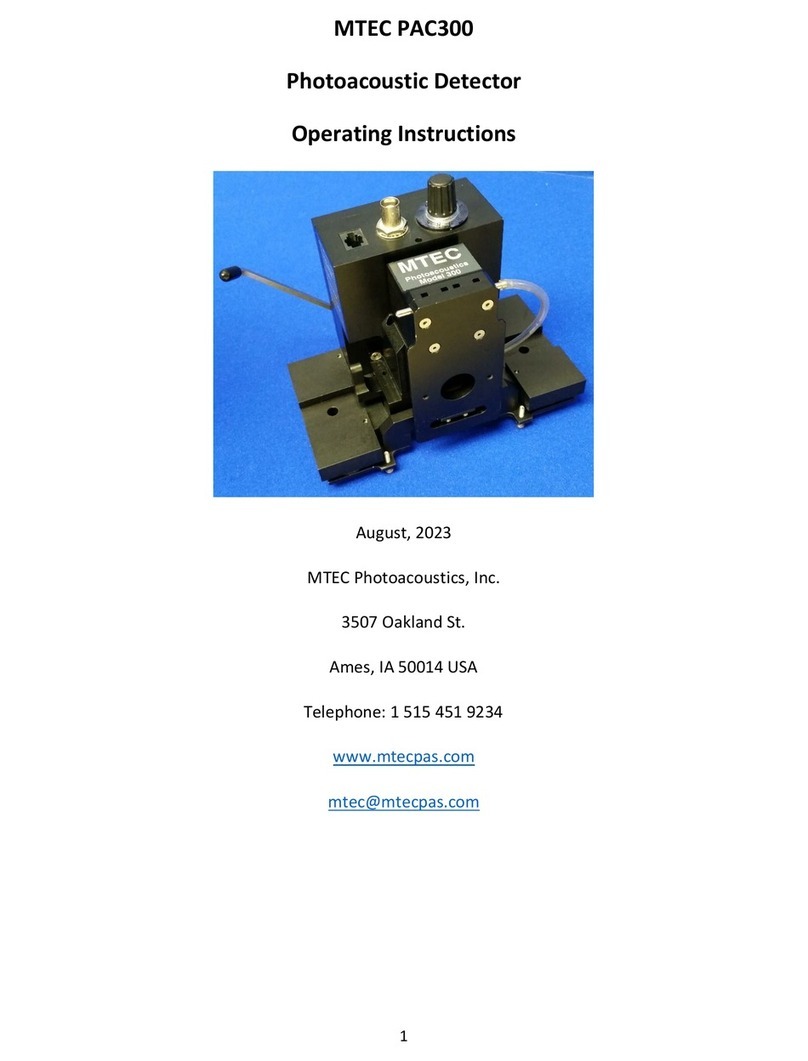
5
3 Set Up Directions
3.1 Rear Lever Setting
The rear lever rotates through an angle of 900when samples are
changed. The end points of rotation can be adjusted to facilitate ease of
operation in a particular FTIR by mounting the lever in one of the three
sockets. These are shown in Fig. 3.5a.
3.2 Mounting and Aligning the Detector in the FTIR
The model 300 mounts in the sample slide fixture of the FTIR. This
fixture ideally should be located at the beam focus in the sample
compartment and the beam should pass through the center of the hole in the
fixture.
In practice, the slide fixture location may only be approximately
correct resulting in the beam focus in the model 300 sample cup being a little
off center. The focus centering is checked by placing one of the infrared
sensitive liquid crystals supplied with the model 300 in the sample cup. The
crystal should rest on the foam cylinder which itself should rest on a brass
spacer to elevate the crystal to near the rim of the sample cup (see Figure
3.2). Two crystals are supplied. Select by trial and error the one with the best
response given the ambient temperature of the laboratory.
In order to check alignment, place the detector in the slide fixture. If
the fixture has an adjustable lower stop for the slide, be sure that it is set so
that the holes in the slide fixture and in the mating model 300 slide plate are
concentric.
Block the infrared beam and insert the sample holder with the liquid
crystal into the model 300. Fully open the aperture of the FTIR. Elevate the
crystal by moving the rear lever to the CLOSED PURGE position. Remove
the beam block for several seconds and replace it. Immediately remove the
sample cup and examine the exposure pattern before it fades as the
temperature falls.
The types of patterns that may be observed are shown in Fig. 3.3.
Pattern 1 indicates ideal alignment. Pattern 2 shows side-to-side
misalignment. This can be corrected by moving the FTIR's sample fixture
perpendicular to the beam in the direction opposite to the misalignment
direction. Alternatively, side-to-side adjustment can be made by loosening the
screws as shown in Figure 3.4 and sliding side-to-side the model 300's slide
plate relative to its mounting yoke. If the FTIR has no provision for side-to-
side adjustment of its sample fixture, this alternative method must be used.
Artisan Technology Group - Quality Instrumentation ... Guaranteed | (888) 88-SOURCE | www.artisantg.com




























